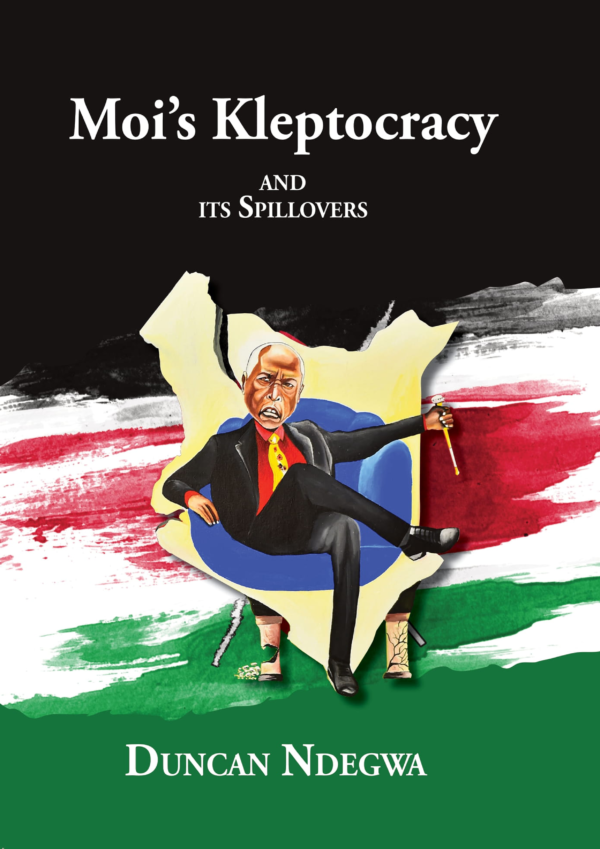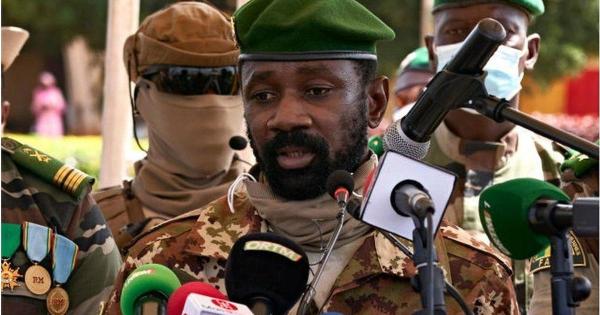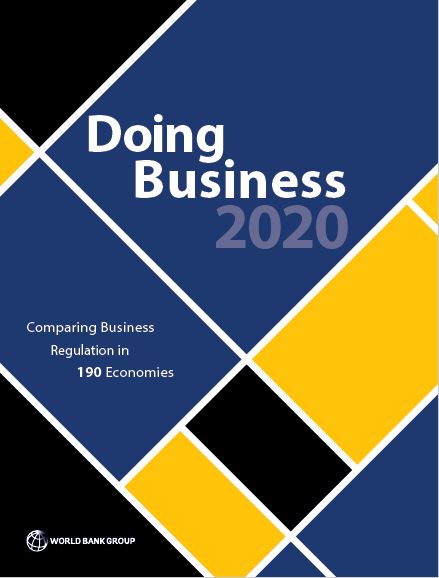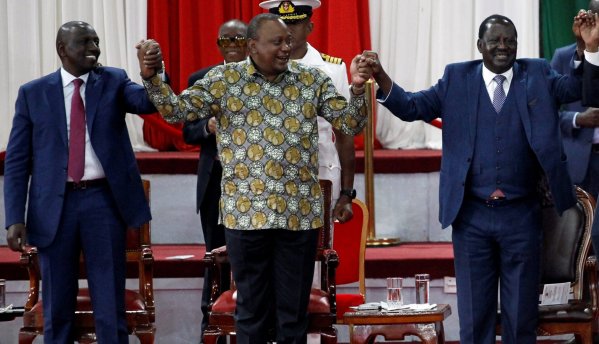By Sitati Wasilwa
In a year, Kenyan voters will have an opportunity to elect political leaders. Much focus has been directed towards the presidential election given its high stakes stemming from Uhuru Kenyatta’s imminent exit.
It is natural that politicians – the presidential hopefuls – embark on crafting alliances based on their interests. But how will the alliances shape up? This article attempts to discuss the prospects of new political formations drawing from a series of post-handshake political events.
The handshake is one of the most significant political events in Kenya after the promulgation of the current constitutional dispensation. Other landmark political events include the nullification of the 2017 presidential election results and the rulings by the High Court and Court of Appeal with regard to the unconstitutionality of the Constitution of Kenya Amendment Bill 2020.
My hypothesis about the significance of the handshake is premised on its aftermath. Some political formations have since been emasculated or collapsed while new ones have emerged. Political players have also been changing gears and shifting lanes to solidify their political standing.
One of the notable political events post-handshake is the Jubilee-KANU post-election agreement. At the outset, this political manoeuvre helped Uhuru Kenyatta to solidify his political power and also enabled him to play a primary role in the 2022 succession politics.
I extensively wrote about this agreement a while back and highlighted some of its possible effects such as the eventual death of the Jubilee Party, Mt. Kenya politicians joining KANU or establishing their political vehicles, formation of a broad coalition comprising of KANU, Jubilee, ODM, ANC, Wiper and FORD-Kenya and the possible betrayal of Raila Odinga by Uhuru Kenyatta.
The creation of the National Development Implementation and Communication Cabinet Committee in January 2019 is another post-handshake event engineered by Kenyatta to strengthen his position and manage his succession.
Fred Matiang’i was tasked with the role of chairing the Committee, a move aimed at ostracising Deputy President William Ruto.
In September 2020, a plot was hatched by Uhuru Kenyatta’s lieutenants in the Jubilee Party to split the Deputy Party Leader’s position into four. I wrote about this machination likening it to past instances involving former Vice Presidents Oginga Odinga and George Saitoti.
Oginga’s date with the devil took place at the infamous Limuru Conference held on the 12th and 13th of March, 1966 when his post of deputy party president was replaced by eight party vice presidents.
Saitoti’s baptism with fire was on the 18th of March, 2002 when the position of KANU’s National Vice-Chairman was replaced by four Vice Chairmen’s positions. He was replaced by Kalonzo Musyoka, Katana Ngala, Musalia Mudavadi and Uhuru Kenyatta.
While writing about the possible consequences of the Jubilee-KANU post-election agreement, I suggested that William Ruto ought to find a new political home or risk further humiliation and isolation in the Jubilee Party. He has since embraced the United Democratic Alliance (UDA) party.
Another post-handshake development is the formation of One Kenya Alliance (OKA) by KANU, ANC, Wiper Party and FORD-Kenya.
OKA’s survival, however, hangs in the balance considering KANU’s position to bring on board Odinga as a major stakeholder. Kalonzo and Mudavadi are cagey about KANU’s proposal and this could as well spell doom for the fledgling alliance.
KANU’s withdrawal from the coalition would deal it a heavy blow since Gideon Moi is the only principal who can finance a well-oiled presidential campaign.
One more hurdle that OKA should overcome is the Jubilee-KANU post-election agreement. KANU has made it clear that this agreement runs until 2022. A joint statement issued by the OKA principals in late July 2021 indicates the desire by their parties to leave their pre-and post-election agreements.
ANC, Wiper and FORD-Kenya have since left the National Super Alliance (NASA) after the latter’s formal dissolution. KANU, however, is yet to cut off its engagement with the Jubilee Party due to the strong ties between the Kenyatta and Moi families.
Plans are underway to formalise a coalition between ODM and the Jubilee Party. On this, ODM is walking on eggshells given the waning stature of the Jubilee Party. The latter has already lost its footing in William Ruto’s backyard and stares at further losses in the Mt. Kenya region owing to the mushrooming of smaller parties.
The rulings by the High Court and the Court of Appeal against the Constitution of Kenya Amendment Bill 2020 will certainly redefine political realignments. Leading presidential hopefuls would have massively benefited from an expanded Executive but the Courts’ pronouncements present a tough balancing act for them in choosing suitable running mates and plotting formidable political formations.
Fast forward, Kenya’s political landscape is set to experience waves of realignments, but what will shape the expected developments? Who are the major players? What are some of the prospective outcomes?
Uhuru Kenyatta’s Succession Planning
Naturally, every president manages his or her succession and Uhuru Kenyatta is not an exception. The infancy stages of the Jubilee administration were dominated by narratives of Kenyatta clearing his two terms and thereafter pass the baton to Ruto for another ten years! That was far-fetched and naïve.
The handshake dented Ruto’s hopes of being supported for the top office by Kenyatta, a move woven out of the typical Machiavellian script of discarding those who help one to obtain power.
Kenyatta has effectively used the handshake to consolidate power in his second term and to plan his succession.
His remarks, while on a tour in Nyeri in November 2018, on his active participation in the 2022 succession politics, and whose preferred successor will confound many, is a wild card that Ruto wouldn’t have anticipated.
Moreover, Kenyatta’s comments in January 2021 at Vihiga on the need for other ethnic groups other than the Agikuyu and Kalenjin to take over the presidency in 2022 is an indicator of him not intending to support Ruto.
In June 2021, while meeting leaders from the Kamba community, Kenyatta yet indicated his intentions to back a presidential candidate collectively selected by the now-defunct NASA coalition affiliated parties.
Kenyatta has since met twice with Odinga and the OKA chiefs in Mombasa with reports indicating the ODM leader as his preferred successor.
Several people have chided Kenyatta’s active participation in the 2022 presidential elections but I do not think it is immoral as it is made to sound; most incumbents across the world have a hand in who succeeds them.
Others have gone ahead to liken Kenyatta’s succession planning to Moi’s in 2002. Wild cards are being drawn and shuffled attempting to paint Kenyatta’s ultimate choice as a poisoned chalice that would be rejected by the majority of voters. But what are the odds?
KANU was widely unpopular in 2002 and faced a united opposition. Besides, KANU endured a mass walkout of politicians who were dissatisfied with Moi’s decision to support Uhuru Kenyatta as the party’s presidential candidate.
This time around, the ruling party – Jubilee – is unlikely to field a candidate and could only do so in a coalition. That notwithstanding, Jubilee is a lame party that is likely to suffer from mass walkouts in the months leading to the general elections. ODM should be wary of this as it cements its coalition with Jubilee.
The rejection of Moi and Project Uhuru in 2002 was at the backdrop of citizens fatigued by decades of poor governance. I’m uncertain that Kenyatta’s preferred successor will be defaced with accusations of enhancing a legacy characterised by a huge public debt, general economic mismanagement and abrogation of the rule of law. In any case, it is the candidature of Ruto that should be subjected to thorough scrutiny with regard to the performance of the Jubilee administration.
Furthermore, Kenyatta, learning from Moi’s and Kibaki’s succession planning, may not want to directly campaign for his preferred successor but would help in mobilising resources and networks within and without the country.
Odinga seems to be reaping the fruits of Kenyatta’s patronage in the post-handshake era. Several wealthy industrialists from Kenyatta’s backyard have paid homage to him and he has also been hosted by some of them. Also, Odinga’s launch of the Azimio La Umoja in Nakuru in the presence of several politicians and leading entrepreneurs from the Agikuyu community sent a clear signal as Kenyatta’s preferred successor.
David Murathe’s sentimental expressions are pointers of Kenyatta’s inner sanctum having sanctioned Odinga as the preferred successor.
Gideon Moi will be a major player in the Kenyatta succession primarily due to the strong ties between their families. This is the only opportunity for Kenyatta to prop him up to the national political scene. As previously stated, the Jubilee-KANU post-election agreement was no coincidence and the younger Moi’s insistence on the formation of a broad coalition with Odinga on board is a clear sign of his desire to play a visible role in Kenyatta’s succession.
Raila Odinga’s Candidature
Odinga personifies Law 25 of the 48 Laws of Power of recreating oneself. For instance, he sought for re-election on a National Development Party (NDP) ticket in 1994 after decamping from FORD-Kenya.
After the 1997 elections, Odinga recreated his political life by striking a deal with President Moi in February 1998 culminating in the formation of a KANU-NDP coalition government, and eventually, a merger between the two parties. Odinga hoped to be KANU’s flagbearer in the 2002 elections banking on the strategic friendship he’d cultivated with Arap Moi.
Arap Moi’s unexpected pronouncement of supporting Uhuru Kenyatta pushed Odinga to reinvent himself and he led other disgruntled voices out of KANU forming the Liberal Democratic Party (LDP) that partnered with the National Alliance of Kenya (NAK) to establish the National Alliance Rainbow Coalition (NARC).
Betrayal within the NARC administration – caused by the failure to implement the election MoU – resulted in Odinga opposing it, and capitalized on the 2005 constitutional referendum to chart his political path. He successfully led the NO/Orange campaigns leading to the rejection of the proposed constitution. This birthed the Orange Democratic Movement.
After a fractious presidential election in 2007, Odinga formed a Grand Coalition Government with Mwai Kibaki and successfully campaigned for the institutionalisation of a new constitutional dispensation.
Having lost the 2013 presidential elections through the Coalition for Reforms and Democracy (CORD), Odinga engineered a move to push for constitutional reforms through the Okoa Kenya Movement banner. This made him politically relevant.
Okoa Kenya failed to attain its goals after the Independent Electoral and Boundaries Commission (IEBC) rejected some signatures collected to approve the call for constitutional reforms.
A presidential election marred with irregularities in 2017 that was eventually nullified by the Supreme Court gave Odinga the impetus to showcase his political recreation skills. He took oath as the people’s president cornering Kenyatta’s administration into negotiating with him resulting in the historical handshake – otherwise known as the Building Bridges Initiative (BBI).
Odinga was at the forefront of pushing for constitutional changes through the BBI, a move thwarted by the High Court and the Court of Appeal. He appears to be unmoved by the rulings and has quickly moved on to preparing for the 2022 elections.
His launch of the Azimio La Umoja was the clearest indicator of the ODM leader contesting for next year’s presidential election. But he faces a Herculean task in settling for a running mate given the failure to expand the Executive as hoped for through the Constitution of Kenya Amendment Bill 2020.
Kalonzo and Mudavadi are unwilling to support Odinga’s presidential ambitions though the latter stands a better chance than the two with more resources and extensive networks to his name.
There is talk of Odinga picking a running mate from Kenyatta’s Mt. Kenya bloc but the region currently lacks a political heavyweight to take up such a responsibility.
Equally important, Odinga is keen on securing a significant number of votes from the Mt. Kenya region by banking on the handshake. As earlier stated, he has played host to several delegations of financially powerful individuals from the region and his party is in the process of creating an alliance with the Jubilee Party.
Jimmy Wanjigi has declared his intention to vie for the presidency on an ODM ticket but he’ll first have to face Odinga in the party primaries. Odinga is definitely behind Wanjigi’s presidential ambitions using it as a slate to capture the attention of the Mt. Kenya bloc.
While several attempts have been made by Kenyatta to sell his candidacy to the leaders of OKA, the unrelenting nature of Kalonzo and Mudavadi is a stumbling block that Odinga needs to overcome.
In essence, this would involve creating a broad coalition bringing on board Kivutha Kibwana, Charity Ngilu and Alfred Mutua to isolate Kalonzo in lower Eastern, and settling on Mudavadi as his running mate. It will be easier for Odinga to do without Kalonzo than Mudavadi.
Another headache for Odinga is the Coastal region. It may prove challenging for him to accommodate the interests of Coastal politicians with Amason Kingi having already been kicked out of ODM. Kingi is advocating for a Coastal political formation though he seems isolated with Odinga having scattered his move by reaching out to Hassan Joho and Granton Samboja among other politicians.
The Moi and Matiang’i factors will play to the advantage of Odinga. Moi may not bring a substantial number of votes to Odinga’s camp but will certainly be a key financier and deal-breaker for the other OKA principals to support the former Prime Minister. Matiang’i will utilise government resources to rally the Gusii community to support Odinga and the recently convened Nyanza Leaders’ Convention at Sikri is a solid signal.
William Ruto’s Candidature
Ruto is an effective and energetic politician and one of the frontrunners of the 2022 elections alongside Odinga.
It would have been easier for Ruto to bag the presidency if it were not for the handshake but the post-handshake politics complicate his political equation.
Ever since the handshake, the Deputy President has attempted to cleverly take credit for the accomplishments of the Jubilee administration and dissociate himself from its failures. It is too soon to conclude if this approach will work in his favour.
From lamely opposing the BBI to advancing his ‘Hustler Narrative’ packaged as the bottom-up economic model, Ruto appears defiant on building any political alliances with senior politicians drawn from Kenya’s largest ethnic blocs.
This borders on arrogance and has already ruffled feathers in Central Kenya. I am persuaded that politicians from the Mt. Kenya region will not be naïve to decamp to Ruto’s UDA party based on the unwise merger between The National Alliance (TNA), the United Republican Party (URP) and other fringe parties that gave rise to the Jubilee Party. Rejecting alliances with other parties will cost him dearly.
Aside from overestimating his national popularity, Ruto faces a hard time selecting his running mate. His most likely choice will be from the Mt. Kenya region and this may not augur well with politicians and Kenyans from other ethnic communities. As such, the expansion of the Executive would have worked to his advantage despite his opposition to it.
Ruto has the financial means to run an effective presidential campaign but his networks especially external ones are limited. His main ally is Yoweri Museveni and the two have never shied away from displaying their camaraderie. Word has it that Museveni is helping Ruto gain access to some political networks across the world.
In December 2019, Museveni organised for the beleaguered Deputy President to launch the William Ruto Institute of African and Leadership Studies at Makerere University, a move that stirred controversy.
Earlier in 2015, Ruto campaigned for Museveni’s reelection in Kapchorwa and was back in the same region in 2018 to co-launch the Kapchorwa-Suam road.
Also, in 2018, Ruto was in Kampala to receive the Lifetime Achievement Award organised by Uganda Young Achievers Awards. In July 2021, Ruto was the chief guest at a ceremony to lay the foundation stone of a manufacturing plant for biological drugs and mRNA vaccine.
The formation of a broad coalition by Ruto’s competitors will work against him. Perhaps it is time he considers building alliances with other parties or risks isolating himself.
And are some of his political associates following him to secure the bag? With his much-acclaimed generosity, any unprincipled, pauper politician will not hesitate to strike a genuine or fake friendship with him. It will be interesting to see if such political friends will stick with him as the 2022 election nears.
OKA’s Prospects
None of OKA’s four principals stands a chance to win the presidency, individually or collectively. Each of them lacks solid backing from their ethnic blocs. Kalonzo is staring at a supremacy battle against Ngilu, Mutua and Kibwana in Ukambani. Mudavadi is not guaranteed solid support from the former Western Province because of the inroads made by Odinga and Ruto. Moi lacks the mettle to marshal a significant number of votes, especially among the Kalenjin ethnic communities. Moses Wetang’ula’s is battling wrangles in his FORD-Kenya party. Besides, Wetang’ula is barely popular beyond few pockets of the Bukusu people.
There is little to take home about OKA’s prospects. This political formation will struggle to stay afloat financially especially if Gideon Moi abandons it. A weak financial muscle implies that OKA’s member parties will win very few seats at all levels. It will also be a challenge for OKA to convince formidable politicians across the country to jump ship because of a narrow financial base.
OKA’s principals have to contend with the lack of extensive external networks. Furthermore, OKA has a high deficit of strategic minds to guide the thinking of its principals and run a serious presidential campaign.
Whoever wants to win the presidency in 2022 must embrace a broad-based coalition. Temperatures have just started to rise but it is still early to map out the nature of alliances that will be formed. One thing is for sure; the weaker presidential hopefuls will team up with the stronger ones. We can only look forward to interesting coalition names.
Sitati Wasilwa is a political economist, a consultant on geopolitics and governance affairs, writer and moderator. He is a youth leader at Kenya YMCA, a member of the Local Solutions Youth Panel at the Global Youth Mobilization and a contributing writer for The African Executive Magazine. He writes in his personal capacity. Twitter: @SitatiWasilwa LinkedIn: Sitati Wasilwa Blog: The Kavirondo Facebook: Sitati Wasilwa









